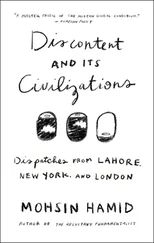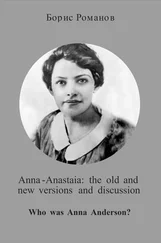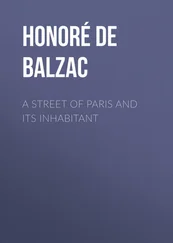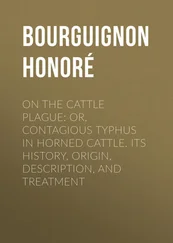Henry Edwards - Old and New Paris - Its History, Its People, and Its Places, v. 1
Здесь есть возможность читать онлайн «Henry Edwards - Old and New Paris - Its History, Its People, and Its Places, v. 1» — ознакомительный отрывок электронной книги совершенно бесплатно, а после прочтения отрывка купить полную версию. В некоторых случаях можно слушать аудио, скачать через торрент в формате fb2 и присутствует краткое содержание. Жанр: foreign_antique, foreign_prose, Путешествия и география, на английском языке. Описание произведения, (предисловие) а так же отзывы посетителей доступны на портале библиотеки ЛибКат.
- Название:Old and New Paris: Its History, Its People, and Its Places, v. 1
- Автор:
- Жанр:
- Год:неизвестен
- ISBN:нет данных
- Рейтинг книги:4 / 5. Голосов: 1
-
Избранное:Добавить в избранное
- Отзывы:
-
Ваша оценка:
- 80
- 1
- 2
- 3
- 4
- 5
Old and New Paris: Its History, Its People, and Its Places, v. 1: краткое содержание, описание и аннотация
Предлагаем к чтению аннотацию, описание, краткое содержание или предисловие (зависит от того, что написал сам автор книги «Old and New Paris: Its History, Its People, and Its Places, v. 1»). Если вы не нашли необходимую информацию о книге — напишите в комментариях, мы постараемся отыскать её.
Old and New Paris: Its History, Its People, and Its Places, v. 1 — читать онлайн ознакомительный отрывок
Ниже представлен текст книги, разбитый по страницам. Система сохранения места последней прочитанной страницы, позволяет с удобством читать онлайн бесплатно книгу «Old and New Paris: Its History, Its People, and Its Places, v. 1», без необходимости каждый раз заново искать на чём Вы остановились. Поставьте закладку, и сможете в любой момент перейти на страницу, на которой закончили чтение.
Интервал:
Закладка:
The conversation at an end, General Bugeaud stood up, and the emir remained seated; whereupon the former, stung to the quick, seized the emir’s hand and jerked it, saying “Come, get up.” The French were delighted at this characteristic act of an imperious and intrepid nature, and the Arabs could not conceal their astonishment. As for the emir, seized with an involuntary confusion, he turned round without uttering a word, sprang on his horse and rode back to his own people; his return being a signal for enthusiastic cries of “God preserve the Sultan!” which echoed from hill to hill. A violent thunder-burst added to the effect of this strange scene, and the Arabs vanished among the mountain gorges.
Until 1860 the Boulevard du Temple was noted for a number of little theatres, where marionettes might be seen dancing on the tight-rope, or where pantomimes in the Italian style were performed. Then there was the cabinet of wax figures, together with other little shows, difficult to class: all destined in that year to disappear. The reconstruction of this portion of Paris caused the removal of many theatres, which were built again at other points. The site of the former circus was now occupied by the Imperial Theatre of the Châtelet. The circus reappeared, for winter performances, in the Boulevard des Filles de Calvaire, for the summer season in the Champs Élysées. In connection with the winter circus the Popular Concerts started by the late Pasdeloup must not be forgotten. Here the finest symphonic music of the French and other composers, chiefly modern, was performed in admirable style. Here the French public were familiarised with the works of Berlioz, and, in spite of a certain opposition at the outset, with selections from some of the operas of Wagner. Pasdeloup, who after thirty years’ unremitting work died in poverty, used to find worthy imitators and successors in M. Colonne and M. Lamoureux, both renowned among the musical conductors of the period.
Number forty-two of the Boulevard du Temple marks the house, formerly number fifty, whence the notorious Fieschi, on the 28th of July, 1835, exploded his infernal machine which was intended to kill Louis Philippe and his sons, and which, in fact, struck down by their side one of the veterans of the Empire, Marshal Mortier, Duc de Trévise, and several other superior officers.
Not even in Russia have so many sovereigns been assailed by their subjects as in France. Since, indeed, the murder of Henri III. by Jacques Clément, it has been the rule, rather than the exception, with royal personages in France to be struck by the assassin or the executioner; or, if spared in body, to be brought all the same to some tragic end. Henri IV. fell by the hand of Ravaillac. No such fate awaited Louis XIII., Henri IV.’s immediate successor; but Louis XV. was stabbed by Damiens, Louis XVI. was guillotined, Louis XVII., imprisoned in the Temple, died one scarcely knows how or where. The Duke of Enghien was shot by order of Napoleon. Louis XVIII. had to fly from Paris at the approach of Napoleon returning from Elba; the Duke of Berri was assassinated by Louvel; Charles X. lost his crown by the Revolution which brought Louis Philippe to the throne; and Louis Philippe, who was ultimately to disappear in a hackney cab before the popular rising which led to the establishment of the Second Republic, and soon afterwards of the Second Empire, was meanwhile made the object of some half-dozen murderous attacks, the most formidable being the one planned and executed by Fieschi, otherwise Gérard. What, it may be asked, had a quiet, peaceful, and eminently respectable monarch like Louis Philippe done to provoke repeated attempts upon his life? The explanation is simple. Charles X. had been driven away in 1830 by the Republicans, not that another king might be appointed in his stead, but that the Republic might be established. Louis Philippe was, from their point of view, an interloper who must, at all hazards, be removed.
Fieschi’s experiment with his infernal machine created a sensation all over Europe; and the papers for some time afterwards were full of particulars, more or less authentic, of the diabolical attempt upon King Louis Philippe’s life. The Revolutionists, whose action against Charles X. had led to the establishment, not of a Republic, but of a Monarchy – hateful to them in whatever form – had evidently sworn that he should die. It was ascertained by M. Thiers, the First Minister, that on the occasion of a journey which the King intended to make from Neuilly to Paris certain conspirators had arranged to throw a lighted projectile into the royal carriage; and His Majesty, therefore, was requested to let the royal carriage proceed on its way, at the appointed time, without him, and occupied simply by his aides-de-camp, no previous announcement being made as to the absence of the King. Louis Philippe having protested against this suggestion as unfair to the aides-de-camp: “Sire,” replied M. Thiers, “it is their duty to expose themselves for the safety of your person, and they surely will not complain when they find the Minister of the Interior by their side in the threatened carriage.” The King, however, rejected this proposition, declaring that he had resolved on the journey, and, hazardous as it might be, would undertake it. His resolution having been combated in vain by M. Thiers, the preparations for departure were ordered. Just as the King was about to get into the carriage, the Queen and the princesses suddenly presented themselves in an agony of terror and of tears. “It is impossible,” says M. Louis Blanc, “to say whether a skilful indiscretion on the part of the Minister had initiated them into the secret of what had taken place, or whether they had received no other intimation than that supplied by the instincts of the heart.” However this may have been, the Queen, finding that Louis Philippe would not abandon his intention, insisted on accompanying him, and it was quite impossible to prevent her from doing so. M. Thiers then begged the honour of a seat in the threatened carriage, and the journey was risked. The attack apprehended was not, however, on this occasion to be made; and it was as long afterwards as the 28th of July, 1835, on the occasion when Louis Philippe drove through Paris in memory of the “Three Days” of July, 1830, that Fieschi put his murderous project into execution. “On the 28th of July,” says M. Louis Blanc, “the sun rose upon the city, already perplexed with fears and doubts. The drum which summoned the National Guards early in the morning beat for some time in vain: a heavy apathy, in which there mingled a sort of morbid distrust, weighed upon everyone. At ten o’clock, however, the legions of the Garde Nationale stretched in an immense line along the boulevards, facing 40,000 of the regular troops, horse and foot. The Boulevard du Temple having been pointed out by rumour as the scene of the contemplated crime, the police had orders to parade it with particular watchfulness, and to keep a close eye upon the windows.” On the previous evening M. Thiers had a number of houses in this quarter searched. But the remonstrances of the inhabitants became so violent, that his original intention of examining every building on the boulevard had to be abandoned.
The clock of the château was striking ten when the King issued from the Tuileries on horseback. He was accompanied by his sons, the Dukes of Orleans, Nemours, and Joinville; by Marshals Mortier and Lobau; by his ministers; and by a numerous body of generals and other superior officers and high functionaries. Along the whole line which he traversed there prevailed a dead silence, broken only at intervals by the ex officio acclamations of the soldiers. At a few minutes past twelve the royal cortège arrived in front of the Eighth Legion, which was stationed along the Boulevard du Temple. Here, near the end of the Jardin Turc, as the King was leaning forward to receive a petition from the hands of a National Guardsman, a sound was heard like the fire of a well-sustained platoon. In an instant the ground was strewn with the dead and dying. Marshal Mortier and General Lachasse de Verigny, wounded in the head, fell bathed in their blood. A young captain of Artillery, M. de Villaté, slid from his horse, his arms extended at full length, as though they had been nailed to a cross; he had been shot in the head, and expired ere he touched the ground. Among the other victims were the colonel of gendarmerie, Raffé; M. Rieussec, lieutenant-colonel of the Eighth Legion; the National Guardsmen Prudhomme, Benetter, Ricard, and Léger; an old man upwards of seventy years of age, M. Lebrouste; a poor fringe-maker named Langeray; and a girl of scarcely fourteen, Sophie Remy. The king was not wounded, but in the confusion his horse reared and he sustained a violent shock in the left arm. The Duke of Orleans had a slight contusion on the thigh. A ball grazed the croup of the Duke of Joinville’s horse.
Читать дальшеИнтервал:
Закладка:
Похожие книги на «Old and New Paris: Its History, Its People, and Its Places, v. 1»
Представляем Вашему вниманию похожие книги на «Old and New Paris: Its History, Its People, and Its Places, v. 1» списком для выбора. Мы отобрали схожую по названию и смыслу литературу в надежде предоставить читателям больше вариантов отыскать новые, интересные, ещё непрочитанные произведения.
Обсуждение, отзывы о книге «Old and New Paris: Its History, Its People, and Its Places, v. 1» и просто собственные мнения читателей. Оставьте ваши комментарии, напишите, что Вы думаете о произведении, его смысле или главных героях. Укажите что конкретно понравилось, а что нет, и почему Вы так считаете.












